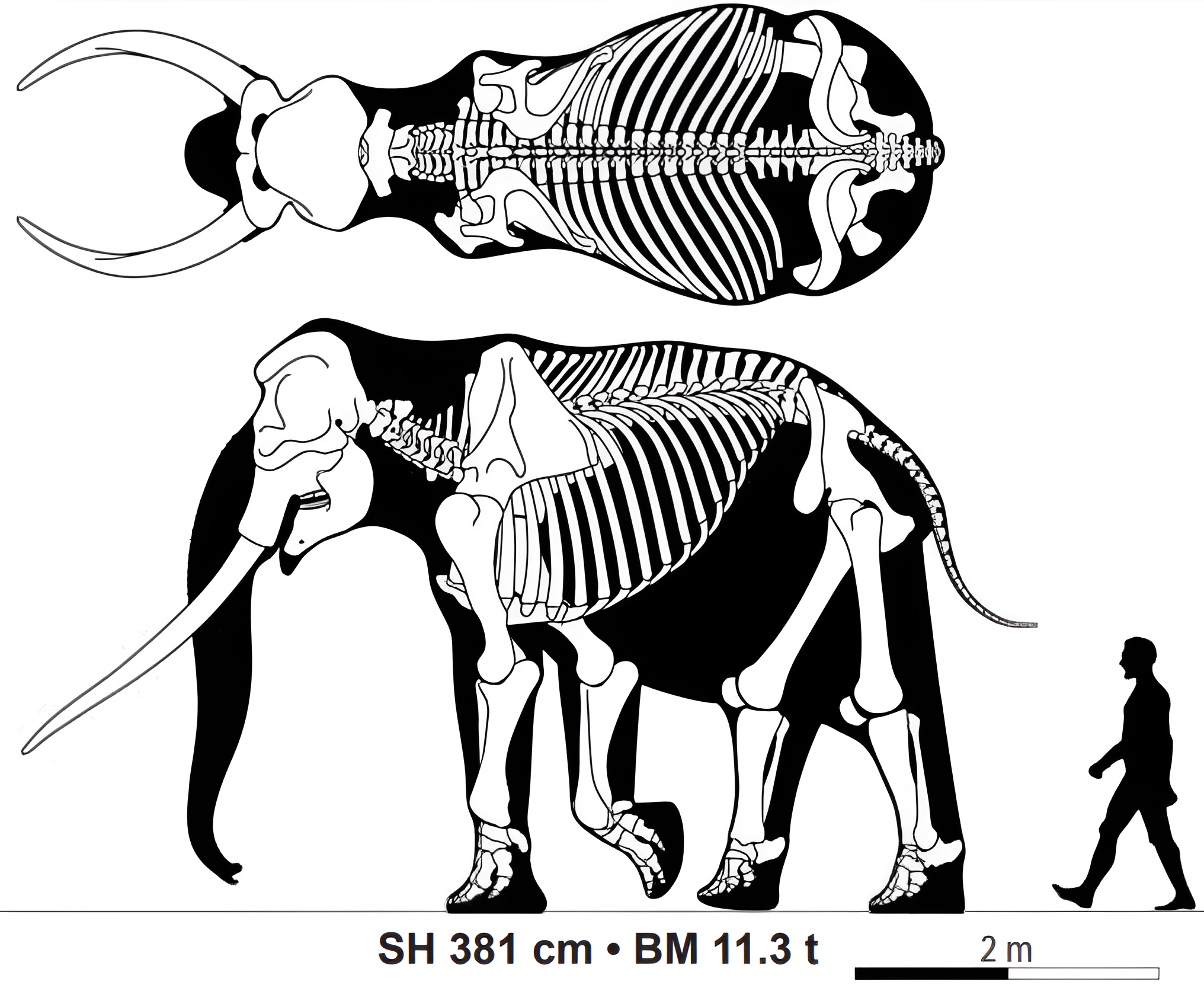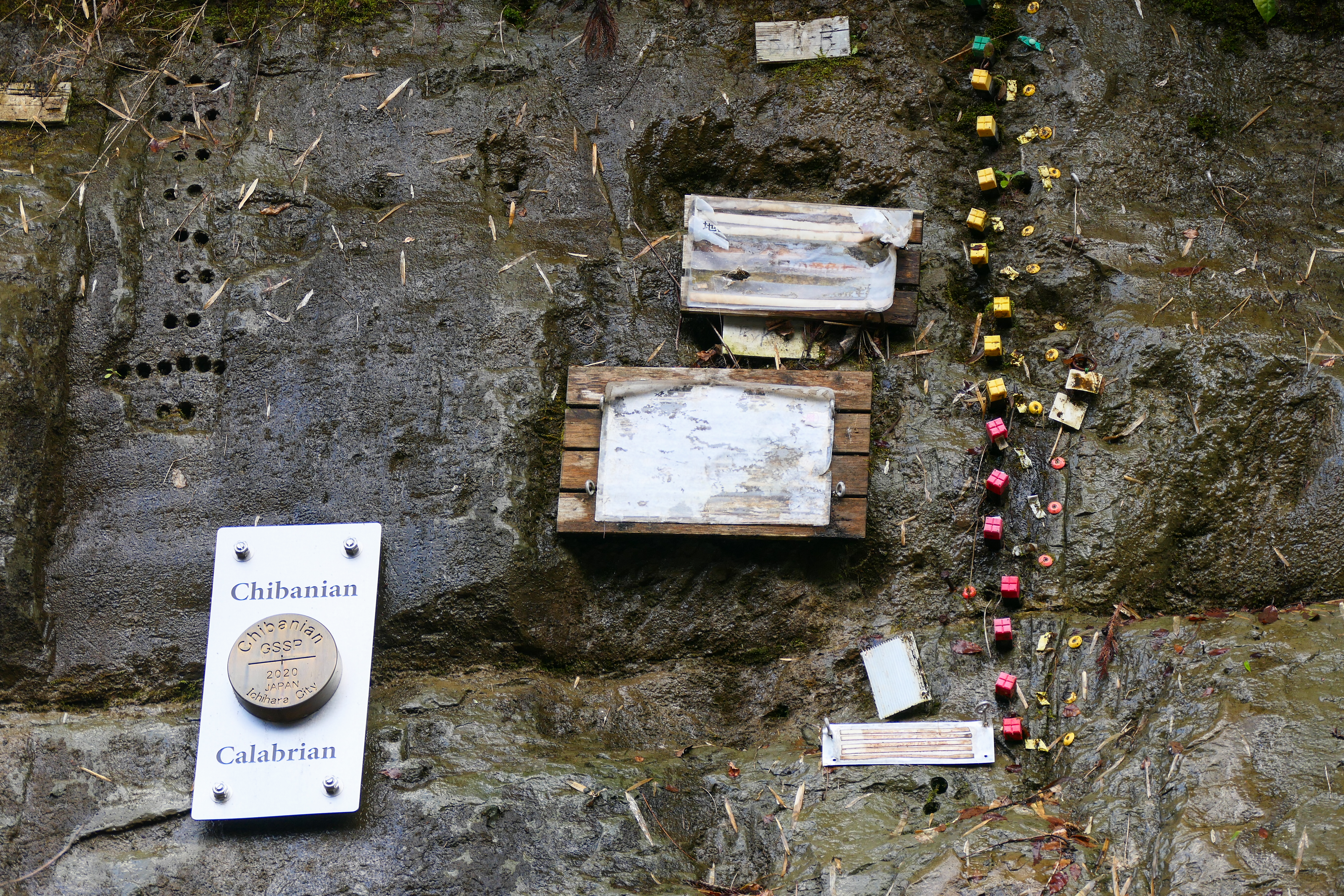|
Palaeoloxodon
''Palaeoloxodon'' is an extinct genus of elephant. The genus originated in Africa during the Early Pleistocene, and expanded into Eurasia at the beginning of the Middle Pleistocene. The genus contains the largest known species of elephants, with mature bulls over tall at the shoulders and over in weight, representing among the largest land mammals ever, including the African '' Palaeoloxodon recki'', the European straight-tusked elephant (''Palaeoloxodon antiquus'') and the South Asian '' Palaeoloxodon namadicus. P. namadicus'' has been suggested to be the largest known land mammal by some authors based on extrapolation from fragmentary remains, though these estimates are highly speculative. In contrast, the genus also contains many species of dwarf elephants that evolved via insular dwarfism on islands in the Mediterranean, some like '' Palaeoloxodon falconeri'' less than in shoulder height as fully grown adults, making them the smallest elephants known. The genus has a long ... [...More Info...] [...Related Items...] OR: [Wikipedia] [Google] [Baidu] |
Straight-tusked Elephant
The straight-tusked elephant (''Palaeoloxodon antiquus'') is an extinct species of elephant that inhabited Europe and Western Asia during the Middle Pleistocene, Middle and Late Pleistocene. One of the largest known elephant species, mature fully grown bulls on average had a shoulder height of and a weight of . Straight-tusked elephants likely lived very similarly to modern elephants, with herds of adult females and juveniles and solitary adult males. The species was primarily associated with temperate and Mediterranean woodland and forest habitats, flourishing during interglacial periods, when its range would extend across Europe as far north as Great Britain and Denmark and eastwards into Russia, while persisting in southern Europe during glacial periods, when northern Europe was occupied by Steppe mammoth, steppe mammoths and later Woolly mammoth, woolly mammoths. Skeletons found in association with stone tools and in one case, a wooden spear, suggest they were scavenged and h ... [...More Info...] [...Related Items...] OR: [Wikipedia] [Google] [Baidu] |
Dwarf Elephant
Dwarf elephants are prehistoric members of the order Proboscidea which, through the process of allopatric speciation on islands, evolved much smaller body sizes (around shoulder height) in comparison with their immediate ancestors. Dwarf elephants are an example of insular dwarfism, the phenomenon whereby large terrestrial vertebrates (usually mammals) that colonize islands evolve dwarf forms, a phenomenon attributed to adaptation to resource-poor environments and lack of predation and competition. Fossil remains of dwarf elephants have been found on the Mediterranean islands of Cyprus, Malta, Crete, Sicily, Sardinia, the Cyclades Islands and the Dodecanese Islands, which are mostly members of the genus ''Palaeoloxodon'', descending from the large tall straight-tusked elephant (''Palaeoloxodon antiquus'') of mainland Europe'','' though two species represent dwarf mammoths. Dwarf species of elephants and '' Stegodon'' have been found on the islands of Indonesia and the Philippi ... [...More Info...] [...Related Items...] OR: [Wikipedia] [Google] [Baidu] |
Palaeoloxodon Namadicus
''Palaeoloxodon namadicus'' is an extinct species of prehistoric elephant known from the Chibanian, Middle Pleistocene to Late Pleistocene of the Indian subcontinent, and possibly also elsewhere in Asia. The species grew larger than any living elephant, and some authors have suggested it to have been the largest known land mammal based on extrapolation from fragmentary remains, though these estimates are speculative. Extinct animals of Indonesia Taxonomic history Remains now recognised as belonging to ''P. namadicus'' were unearthed during Company rule in India, the rule of the British East India Company in India at least as early as the 1830s. The species was named as ''Elephas namadicus'' by British paleontologists Hugh Falconer and Proby Cautley in 1846, based on a skull collected from the valley of the Godavari River in central India. In 1924, American paleontologist Henry Fairfield Osborn placed it within the newly coined genus ''Sivalika''. Also in that year, Japanese pal ... [...More Info...] [...Related Items...] OR: [Wikipedia] [Google] [Baidu] |
Palaeoloxodon Falconeri
''Palaeoloxodon falconeri'' is an extinct species of dwarf elephant that lived during the Middle Pleistocene (sometime between around 500–200,000 years ago) on the Mediterranean islands of Sicily and Malta. It is amongst the smallest of all dwarf elephants, under in height as fully grown adults. A member of the genus ''Palaeoloxodon'', it derived from a population of the mainland European straight-tusked elephant (''Palaeoloxodon antiquus''). Taxonomy In 1859, during the digging of a watertank near the town of Zebbug in central Malta, a sediment filled cavern was excavated, leading to the discovery of an elephant molar, which the owner of the property later presented to Malta Library Museum. This prompted Thomas Abel Brimage Spratt to search through the excavated sediment as well as to continue further excavation of the cavern (now known as Zebbug Cave), yielding additional elephant molars as well as other animal remains.V.L. HerridgDwarf Elephants on Mediterranean Islands: ... [...More Info...] [...Related Items...] OR: [Wikipedia] [Google] [Baidu] |
Palaeoloxodon Naumanni
''Palaeoloxodon naumanni'' is an extinct species of elephant belonging to the genus ''Palaeoloxodon'' that was native to the Japanese archipelago during the Middle to Late Pleistocene around 330,000 to 24,000 years ago. It is named after the German geologist Heinrich Edmund Naumann who first described remains of the species in the late 19th century, with the species sometimes being called Naumann's elephant. Fossils attributed to ''P. naumanni'' are also known from China, though the status of these specimens is unresolved, and some authors regard them as belonging to separate species. Description ''Palaeoloxodon naumanni,'' like other members of the genus ''Palaeoloxodon'' had a growth of bone, dubbed the parietal-occipital crest on the top of the skull to anchor the splenius and possibly other muscles to support the head. In comparison to other Eurasian species of ''Palaeoloxodon'', the parietal-occipital crest was only weakly developed (though more pronounced in males than in ... [...More Info...] [...Related Items...] OR: [Wikipedia] [Google] [Baidu] |
Palaeoloxodon Recki
''Palaeoloxodon recki'', often known by the synonym ''Elephas recki,'' is an extinct species of elephant native to Africa and West Asia from the Pliocene or Early Pleistocene to the Middle Pleistocene. During most of its existence, the species (in its broad sense) represented the dominant elephant species in East Africa. The species is divided into five roughly chronologically successive subspecies, collectively termed the "''Elephas recki'' complex". While the type and latest subspecies ''P. recki recki'' as well as the preceding ''P. recki ileretensis'' are widely accepted to be closely related and ancestral to Eurasian ''Palaeoloxodon,'' the relationships of the other, chronologically earlier subspecies to ''P. recki recki, P. recki ileretensis'' and ''Palaeoloxodon'' are uncertain, with it being suggested they are unrelated and should be elevated to separate species. Taxonomy The species was initially named from specimens found at Bed IV in Olduvai Gorge, Tanzania by Wilhe ... [...More Info...] [...Related Items...] OR: [Wikipedia] [Google] [Baidu] |
Insular Dwarfism
Insular dwarfism, a form of phyletic dwarfism, is the process and condition of large animals evolving or having a reduced body size when their population's range is limited to a small environment, primarily islands. This natural process is distinct from the intentional creation of dwarf breeds, called dwarfing. This process has occurred many times throughout evolutionary history, with examples including various species of Dwarf elephant, dwarf elephants that evolved during the Pleistocene epoch, as well as more ancient examples, such as the dinosaurs ''Europasaurus'' and ''Magyarosaurus''. This process, and other "island genetics" artifacts, can occur not only on islands, but also in other situations where an ecosystem is isolated from external resources and breeding. This can include caves, desert oases, isolated valleys and isolated mountains ("sky islands"). Insular dwarfism is one aspect of the more general Foster's rule, "island effect" or "Foster's rule", which posits that w ... [...More Info...] [...Related Items...] OR: [Wikipedia] [Google] [Baidu] |
Elephant
Elephants are the largest living land animals. Three living species are currently recognised: the African bush elephant ('' Loxodonta africana''), the African forest elephant (''L. cyclotis''), and the Asian elephant ('' Elephas maximus''). They are the only surviving members of the family Elephantidae and the order Proboscidea; extinct relatives include mammoths and mastodons. Distinctive features of elephants include a long proboscis called a trunk, tusks, large ear flaps, pillar-like legs, and tough but sensitive grey skin. The trunk is prehensile, bringing food and water to the mouth and grasping objects. Tusks, which are derived from the incisor teeth, serve both as weapons and as tools for moving objects and digging. The large ear flaps assist in maintaining a constant body temperature as well as in communication. African elephants have larger ears and concave backs, whereas Asian elephants have smaller ears and convex or level backs. Elephants are scatter ... [...More Info...] [...Related Items...] OR: [Wikipedia] [Google] [Baidu] |
Elephas
''Elephas'' is a genus of elephants and one of two surviving genera in the Family (biology), family Elephantidae, comprising one extant species, the Asian elephant (''E. maximus''). Several extinct species have been identified as belonging to the genus, extending back to the Pliocene or possibly the late Miocene. Description Species of ''Elephas'' have distinct bossing of the parieto-occipital region of the skull. The premaxillae bones containing the tusks are tapered. Evolutionary history Relationships of living and extinct elephantids based on DNA, after Palkopoulou et al. 2018.Asian elephants share a closer common ancestry with mammoths (genus ''Mammuthus'') than they do with African elephants (''Loxodonta''). The oldest species attributed to the genus ''Elephas'' is ''E. nawataensis'' from the Late Miocene-Early Pliocene of Kenya, though the validity of this species and its relationship to ''Elephas'' has been doubted. The oldest species widely attributed to the genus ... [...More Info...] [...Related Items...] OR: [Wikipedia] [Google] [Baidu] |
Woolly Mammoths
The woolly mammoth (''Mammuthus primigenius'') is an extinct species of mammoth that lived from the Middle Pleistocene until its extinction in the Holocene epoch. It was one of the last in a line of mammoth species, beginning with the African '' Mammuthus subplanifrons'' in the early Pliocene. The woolly mammoth began to diverge from the steppe mammoth about 800,000 years ago in Siberia. Its closest extant relative is the Asian elephant. The Columbian mammoth (''Mammuthus columbi'') lived alongside the woolly mammoth in North America, and DNA studies show that the two hybridised with each other. Mammoth remains were long known in Asia before they became known to Europeans. The origin of these remains was long debated and often explained as the remains of legendary creatures. The mammoth was identified as an extinct elephant species by Georges Cuvier in 1796. The appearance and behaviour of the woolly mammoth are among the best studied of any prehistoric animal because of ... [...More Info...] [...Related Items...] OR: [Wikipedia] [Google] [Baidu] |
Middle Pleistocene
The Chibanian, more widely known as the Middle Pleistocene (its previous informal name), is an Age (geology), age in the international geologic timescale or a Stage (stratigraphy), stage in chronostratigraphy, being a division of the Pleistocene Epoch within the ongoing Quaternary Period. The Chibanian name was officially ratified in January 2020. It is currently estimated to span the time between 0.7741 annum, Ma (774,100 years ago) and 0.129 Ma (129,000 years ago), also expressed as 774.1–129 ka. It includes the transition in palaeoanthropology from the Lower Paleolithic, Lower to the Middle Paleolithic over 300 ka. The Chibanian is preceded by the Calabrian (stage), Calabrian and succeeded by the Late Pleistocene. The beginning of the Chibanian is the Brunhes–Matuyama reversal, when the Earth's magnetic field last underwent reversal. Its end roughly coincides with the termination of the Penultimate Glacial Period and the onset of the Last Interglacial period (correspondin ... [...More Info...] [...Related Items...] OR: [Wikipedia] [Google] [Baidu] |






